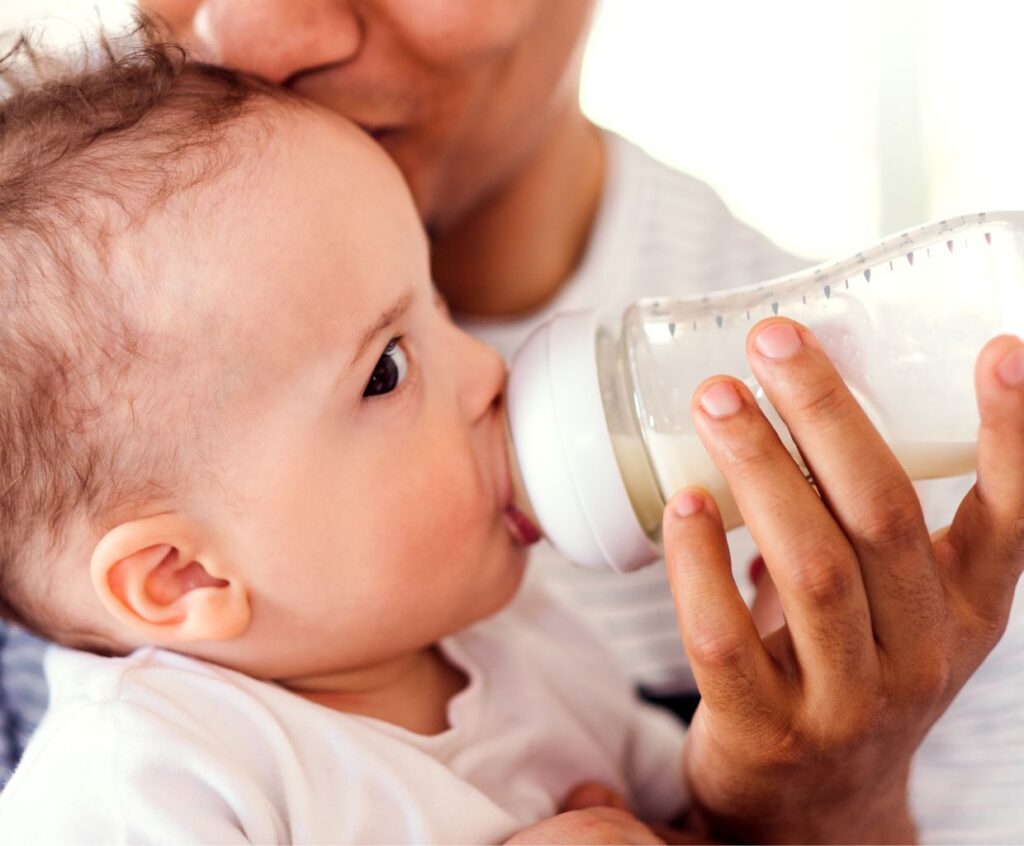How Can I Make My Breast Milk Fattier?
Welcome to this article, where we will discuss how you can increase the fat content in your breast milk. For nursing mothers, it is essential to provide their babies with the best possible nutrition.
Breast milk is considered the gold standard for infant nutrition, and increasing its fat content can benefit your baby’s growth and development.
Factors Affecting Breast Milk Fat Content
Before diving into the methods of increasing breast milk fat, it’s essential to understand the factors influencing its content. Some of the key factors include:
Dietary Choices
Your diet plays a crucial role in determining the fat content of your breast milk. Consuming healthy fats, such as avocados, nuts, and olive oil, can positively impact the fat content in your milk. Staying hydrated and maintaining a balanced diet can contribute to optimal fat production.
Frequency of Nursing
The more frequently you nurse your baby, the higher the fat content in your breast milk. Emptying your breasts fully during each feeding session encourages the production of higher-fat hindmilk. So, try to nurse on demand and avoid long gaps between feedings.
Breast Compression
Breast compression techniques during feeding can help stimulate the flow of high-fat hindmilk. Gently compressing your breast while your baby is actively nursing can ensure they receive a good amount of fatty milk.
Methods to Increase Breast Milk Fat Content
Here are some effective methods to boost the fat content in your breast milk:
Pump After Nursing
After each breastfeeding session, try pumping for an additional 5-10 minutes. This helps to empty your breasts fully and signals your body to produce more milk with a higher fat content. The hindmilk that comes out during pumping is often creamier and more prosperous in fats.
Power Pumping
Power pumping is a technique where you pump for short periods, followed by short breaks, to mimic cluster feeding. This method can help increase your milk supply and fat content, stimulating your body to produce more milk overall.
Include Galactagogues in Your Diet
Galactagogues are substances that promote milk production. Certain foods like oats, fenugreek, fennel, and brewer’s yeast are known to have galactagogue properties. Including these in your diet can potentially enhance the fat content of your breast milk.
Are there any breastfeeding techniques or positions that encourage the production of fattier breast milk?
No specific breastfeeding techniques or positions have been scientifically proven to encourage the production of fattier breast milk. However, there are a few general tips that may help promote the production of higher-fat milk:
1. Adequate milk removal: Ensuring the baby effectively removes milk from both breasts during each feeding session can help stimulate the production of higher-fat milk. This can be achieved through proper latch and breastfeeding techniques.
2. Breast compression: Gently compressing the breast during feeding can encourage the flow of higher-fat hindmilk. This can be done by using your hand or a breast compression technique.
3. Frequent feeding: Offering the breast frequently, on-demand, and allowing the baby to feed for as long as they want can help stimulate milk production and potentially increase fat content.
4. Emptying one breast before switching: Allowing the baby to empty one breast before switching to the other breast can ensure they receive the higher-fat hindmilk from that breast.
5. Breast massage: Massaging the breasts before or during a feeding can help stimulate milk flow and potentially increase the fat content of the milk.
It’s important to note that breast milk composition naturally varies throughout feeding and over time to meet the baby’s changing needs. A mother’s diet and overall health can also impact the fat content of breast milk. If you have concerns about your breast milk production or the fat content, it is best to consult a lactation consultant or healthcare provider for personalized advice.
How do the mother’s diet and hydration affect the fat content in breast milk?
The mother’s diet and hydration can impact the fat content in breast milk. Consuming a well-balanced diet that includes healthy fats can increase the fat content in breast milk. Foods like avocados, nuts, seeds, and fatty fish can provide critical fatty acids that contribute to the fat composition of breast milk.
Hydration is also crucial for maintaining adequate milk production and quality. Drinking enough water helps ensure that the mother’s body is properly hydrated, which can positively affect the fat content in breast milk. Inadequate hydration can lead to a decrease in milk volume and, consequently, a decrease in the fat content.
It’s important to note that while a mother’s diet and hydration can impact the fat content in breast milk, the body is designed to prioritize the baby’s nutritional needs. Therefore, even if a mother’s diet lacks specific nutrients, breast milk will still provide the necessary nutrients for the baby’s growth and development.
What are the potential benefits of feeding my baby fattier breast milk
Feeding your baby fattier breast milk can have several potential benefits for their growth and development. Here are some ways in which it can contribute:
1. Adequate Weight Gain: Fattier breast milk contains more calories, which can help your baby gain weight at a healthy rate. This is particularly important for premature babies, requiring extra calories for optimal growth.
2. Brain Development: The fat in breast milk, specifically the omega-3 fatty acids, is essential for brain development. These fatty acids play a crucial role in building and maintaining the structure of the brain and nervous system.
3. Nutrient Absorption: Fat is necessary to absorb fat-soluble vitamins like vitamins A, D, E, and K. Providing your baby with fattier breast milk ensures they can effectively absorb these vital nutrients, supporting their overall growth and development.
4. Energy Source: Fats are a rich energy source, and by consuming fattier breast milk, your baby receives a readily available energy source. This helps them meet their energy needs, ensuring they have enough fuel for daily activities and growth.
5. Immune System Support: Some fats in breast milk, such as long-chain polyunsaturated fatty acids (LC-PUFAs), have immune-enhancing properties. These fats help support your baby’s developing immune system, reducing the risk of infections and promoting overall health.
6. Eye Health: Fattier breast milk contains a type of fat called docosahexaenoic acid (DHA), which is crucial for developing your baby’s visual system. Consuming breast milk rich in DHA can improve eyesight and visual development.
It’s important to note that the fat content of breast milk can vary from mother to mother and even within each feeding. However, breastfeeding on demand and ensuring your baby empties one breast before switching to the other can help ensure they receive both the foremilk (lower in fat) and hindmilk (higher in fat), providing a balanced nutritional intake.
If you have concerns about your baby’s growth or cannot breastfeed, consulting with a pediatrician or lactation consultant can provide personalized guidance.
How Can I Make My Breast Milk Fattier – Conclusion
Increasing the fat content in your breast milk can provide your baby with additional calories and essential nutrients and promote healthy weight gain. Remember to focus on your diet, nurse frequently, and consider employing some of the abovementioned techniques.
If you have concerns about your breast milk supply or quality, it’s always best to consult a lactation consultant or healthcare professional for personalized advice.


